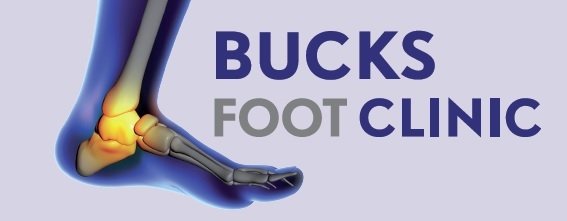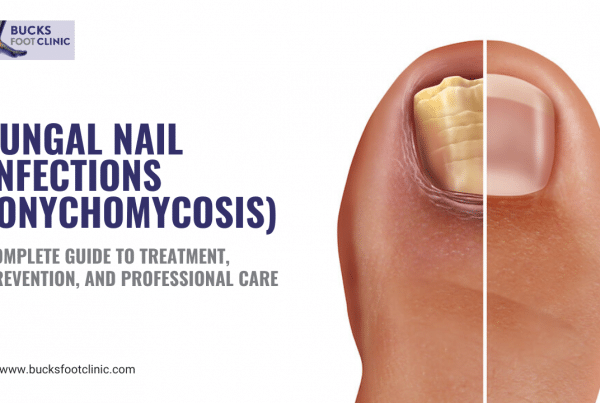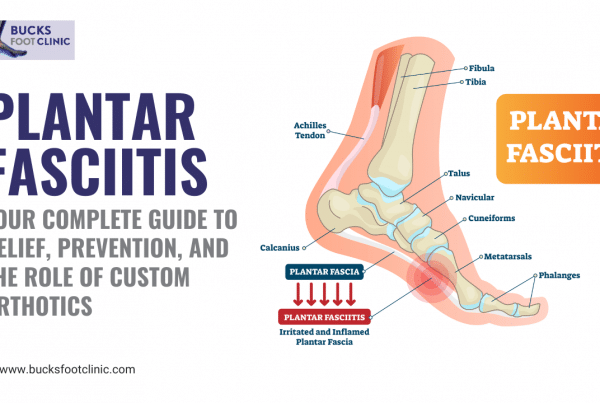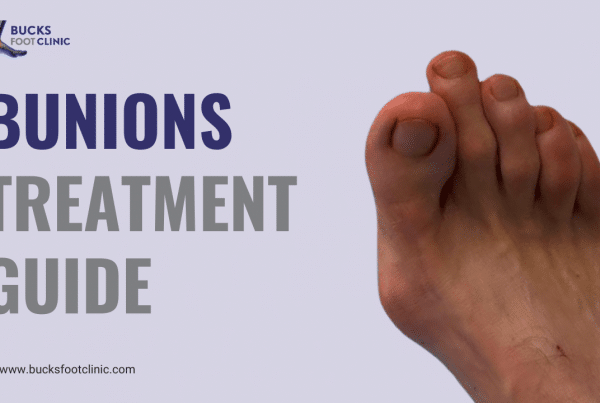
Right Running Shoes to Prevent Foot Pain: A Comprehensive Guide for UK Runners
Whether you’re training for your first 5K or you’re a seasoned marathon runner, experiencing foot pain can derail your fitness goals and impact your daily life. Selecting the proper running shoes isn’t merely about comfort—it’s about preventing long-term damage to your feet, ankles, knees, and even your back. This comprehensive guide will help you understand how to pick running shoes for flat feet, high arches, and everything in between, whilst exploring why professional guidance trumps guesswork when it comes to your foot health.
Understanding the Connection Between Running Shoes and Foot Pain
The relationship between your footwear and foot pain is more complex than many runners realise. Each time your foot strikes the ground whilst running, it experiences forces up to three times your body weight. Without proper support and cushioning, these repetitive impacts can lead to various painful conditions, from plantar fasciitis to stress fractures.
Your feet are remarkably complex structures, containing 26 bones, 33 joints, and over 100 muscles, tendons, and ligaments. When you wear ill-fitting or inappropriate running shoes, you’re not just risking blisters—you’re potentially altering your entire biomechanical chain. This misalignment can cause compensatory movements that lead to pain not only in your feet but throughout your lower body.
The best running shoes for foot pain are those specifically matched to your individual foot structure, gait pattern, and running style. What works brilliantly for your running partner might be entirely wrong for you. Understanding this fundamental principle is the first step towards pain-free running.
Key Features to Look for When Selecting Running Shoes
Arch Support and Foot Type
Your arch type significantly influences which running shoes will best prevent foot pain. Low arches (flat feet) typically require motion control or stability shoes with firm midsoles and structured support. These shoes help prevent overpronation, where the foot rolls excessively inward upon landing.
Conversely, high arches often benefit from neutral cushioned shoes that provide shock absorption without excessive medial support. These runners tend to supinate (underpronate), placing more stress on the outer edges of their feet. Medium arches generally work well with stability shoes that offer moderate support without being overly rigid.
Cushioning Levels
The amount of cushioning you need depends on several factors, including your running surface, weekly mileage, and personal preference. Maximalist shoes with thick midsoles can reduce impact forces but may feel unstable for some runners. Minimalist shoes promote a more natural foot strike but require gradual adaptation to avoid injury.
For most runners experiencing foot pain, a moderate level of cushioning provides the optimal balance between protection and ground feel. Look for shoes with responsive foam that compresses under load but quickly returns to its original shape.
Toe Box Dimensions
A properly sized toe box is crucial for preventing numerous foot problems. Your toes should have adequate room to splay naturally during the push-off phase of running. As a general rule, ensure there’s approximately a thumb’s width of space between your longest toe and the shoe’s end. Remember that feet swell during running, particularly on longer runs, so what feels comfortable in the shop might become restrictive after several kilometres.
How to Prevent Foot Pain: Essential Strategies
- Replace Your Running Shoes Regularly
Running shoes typically last between 500-800 kilometres, depending on your running style, body weight, and the shoe’s construction. Track your mileage using a running app or simple logbook. Signs that replacement is needed include worn-out tread patterns, compressed midsole foam, or uneven wear patterns on the outsole.
- Gradually Increase Your Running Volume
Follow the 10% rule: don’t increase your weekly mileage by more than 10% from one week to the next. This gradual progression allows your feet, along with bones, muscles, and connective tissues, to adapt to increased demands without becoming overwhelmed.
- Rotate Between Multiple Pairs
Using two or three different pairs of running shoes can reduce repetitive stress on specific areas of your feet. Each shoe model distributes forces slightly differently, potentially reducing overuse injuries. This strategy also extends the life of each pair by allowing the midsole foam to fully decompress between runs.
- Strengthen Your Feet
Incorporate foot-strengthening exercises into your routine. Simple exercises like toe curls, marble pickups, and calf raises can significantly improve foot strength and stability. Stronger feet are more resilient and less prone to pain.
- Maintain Proper Running Form
Focus on landing with your foot beneath your centre of gravity rather than far out in front. A slight forward lean from the ankles (not the waist) and a cadence around 170-180 steps per minute can reduce impact forces and associated foot pain.
- Use Appropriate Socks
Invest in quality running socks made from moisture-wicking materials. Proper socks reduce friction, prevent blisters, and provide additional cushioning in key areas. Avoid cotton socks, which retain moisture and lose their shape when wet.
Why Consulting a Podiatrist Is Better Than Home Remedies
Whilst the internet abounds with DIY solutions for foot pain, professional assessment by a qualified podiatrist offers numerous advantages that home remedies simply cannot match.
Professional Gait Analysis
Podiatrists use sophisticated technology, including pressure mapping and video gait analysis, to identify biomechanical issues invisible to the naked eye. This detailed assessment reveals how forces distribute across your feet during walking and running, enabling precise recommendations for footwear and potential orthotics.
The MSc-qualified team at Bucks Foot Clinic utilises cutting-edge diagnostic equipment to provide comprehensive gait analysis. Their advanced academic training means they can interpret complex biomechanical data with greater precision, identifying subtle compensatory movements that might escape less qualified practitioners. This expertise is particularly valuable for runners who’ve struggled with recurring injuries despite trying various shoes and treatments.
Accurate Diagnosis
What you perceive as simple foot pain might actually be a complex condition requiring specific treatment. Podiatrists can differentiate between various conditions that present similar symptoms. For instance, heel pain might be plantar fasciitis, fat pad syndrome, or nerve entrapment—each requiring different treatment approaches.
Custom Orthotics
When necessary, podiatrists can prescribe custom orthotics tailored to your specific foot structure and biomechanical needs. Unlike over-the-counter inserts, custom orthotics address your unique requirements and can significantly reduce foot pain whilst improving overall running efficiency.
At Bucks Foot Clinic, their team of MSc-qualified podiatrists specialises in creating bespoke orthotics using advanced biomechanical assessment techniques. Having a Master of Science degree in podiatry means these practitioners possess advanced clinical knowledge and research-based expertise that goes beyond standard qualifications. This enhanced training enables them to analyse complex gait patterns, identify subtle biomechanical inefficiencies, and design orthotics that precisely address your individual needs.
The clinic’s bespoke orthotic service begins with a comprehensive biomechanical assessment, including digital gait analysis and 3D foot scanning. This technology captures thousands of data points about your foot structure and movement patterns, ensuring the resulting orthotics provide optimal support exactly where needed. Unlike mass-produced insoles, these bespoke devices are manufactured specifically for your feet, taking into account factors such as your running style, weekly mileage, preferred running surfaces, and any existing injuries or anatomical variations.
Comprehensive Treatment Plans
Podiatrists provide holistic treatment plans that address not just symptoms but underlying causes. They can identify contributing factors such as muscle imbalances, flexibility issues, or training errors that home remedies would never address.
Prevention of Future Problems
Regular podiatric assessment can identify potential issues before they become painful problems. Early intervention often prevents minor issues from developing into chronic conditions that could sideline you for months.
How to Fix Common Foot Problems: Practical Solutions
- Address Plantar Fasciitis
Begin with gentle stretching of the plantar fascia and calf muscles, particularly first thing in the morning. Roll a frozen water bottle under your foot for 10 minutes several times daily to reduce inflammation. Ensure your running shoes provide adequate arch support, and consider using a night splint to maintain stretch whilst sleeping.
- Manage Achilles Tendinopathy
Implement eccentric heel drops: stand on a step with your heels hanging off, rise onto your toes using both feet, then slowly lower using only the affected foot. Perform 3 sets of 15 repetitions twice daily. Temporarily reduce running intensity and avoid hill training until symptoms improve.
- Treat Runner’s Toe (Black Toenails)
Ensure proper shoe fit with adequate toe box space. Keep toenails trimmed short and straight across. If blood accumulates under the nail causing pressure, seek professional drainage rather than attempting self-treatment.
- Resolve Metatarsalgia
Use metatarsal pads to redistribute pressure away from the ball of the foot. Temporarily reduce high-impact activities and focus on low-impact cross-training. Ensure your running shoes aren’t excessively worn in the forefoot area.
- Alleviate Shin Splints
Though technically a lower leg issue, shin splints often relate to footwear and foot mechanics. Strengthen the muscles controlling foot pronation, ensure adequate cushioning in your shoes, and avoid sudden increases in training intensity or running on hard surfaces.
- Combat Blisters
Apply petroleum jelly or specialised anti-chafe products to problem areas before running. Use properly fitted, moisture-wicking socks and ensure your shoes aren’t too tight or too loose. For existing blisters, use hydrocolloid dressings to promote healing whilst maintaining training.
Advanced Considerations for Specific Foot Types
Flat Feet Considerations
Runners with flat feet should pay particular attention to motion control features in their shoes. Look for firm heel counters, dual-density midsoles, and medial posts that limit excessive pronation. However, avoid overcorrection, which can cause its own set of problems. The best running shoes for flat feet provide support without completely restricting natural foot movement.
High Arch Adaptations
High-arched runners often benefit from additional cushioning to compensate for their feet’s reduced natural shock absorption. Consider aftermarket insoles with enhanced cushioning properties if standard shoe cushioning proves insufficient. Focus on flexibility exercises to improve foot mobility.
The Importance of Professional Fitting
Visiting a specialist running shop for professional fitting can make an enormous difference in finding the best running shoes for foot pain prevention. Trained staff can assess your gait, measure both feet (they’re rarely identical), and recommend appropriate models based on your specific needs and running goals.
Professional fitters consider factors beyond simple shoe size, including foot volume, instep height, and any anatomical peculiarities. They can also advise on lacing techniques to address specific fit issues without requiring different shoes.
Conclusion: Investing in Your Running Future
Choosing the right running shoes represents an investment in your long-term running enjoyment and overall foot health. Whilst the perfect pair might require some trial and error to identify, the effort pays dividends in injury prevention and enhanced performance.
Remember that the best running shoes for foot pain are those specifically suited to your individual needs. What works brilliantly for elite athletes or your running partners might not suit your unique biomechanics. Take time to understand your feet, seek professional guidance when needed, and don’t compromise on proper fit and support.
By following the prevention strategies outlined above, consulting with podiatrists when appropriate, and addressing problems promptly with proper solutions, you can enjoy pain-free running for years to come. Your feet carry you through countless kilometres—they deserve the best support you can provide.
Get Professional Help at Bucks Foot Clinic
If you’re experiencing persistent foot pain or want expert guidance in selecting the right running shoes and orthotics, the MSc-qualified podiatrists at Bucks Foot Clinic are here to help. With their advanced qualifications and state-of-the-art biomechanical assessment technology, they provide evidence-based treatments tailored to your specific needs.
Contact Bucks Foot Clinic:
- Phone: 01494 434366
- Website: www.bucksfootclinic.com
- Address: 18 Woodside Rd, Amersham HP6 6AJ
- Opening Hours: Monday-Friday 9:00-17:00, Saturday 9:00-13:00
Book your comprehensive gait analysis and biomechanical assessment today to take the first step towards pain-free running. Their bespoke orthotic service, combined with expert footwear advice, can transform your running experience and help you achieve your fitness goals without foot pain holding you back.



